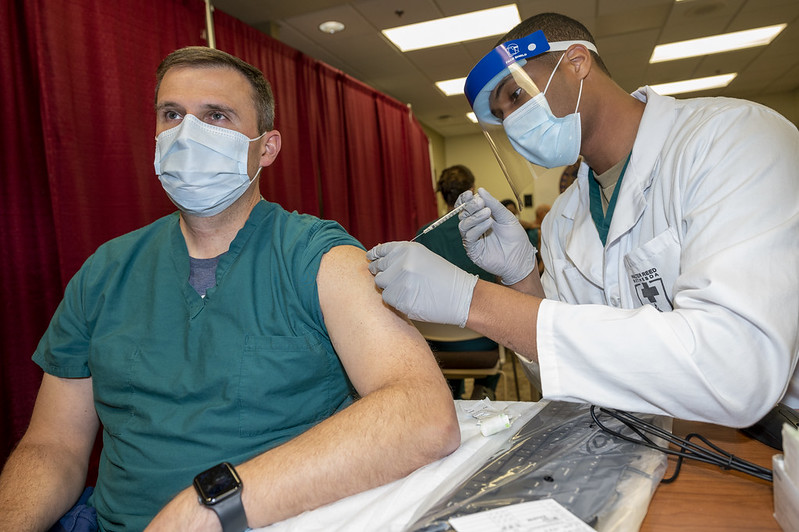A new study from a research consortium including Northwestern University shows that while attitudes toward vaccination remain unchanged among the vaccine-resistant population, the level of hesitancy has dropped substantially since January,from 37% to 29% among health care workers and from 41% to 31% among non-health care workers.
The research also shows that while the rate of vaccination has doubled for health care workers between January and February, those with a graduate degree have been vaccinated at four times the rate of those with a high school degree or less (43% versus 13%).
The study is based on a survey of more than 25,000 Americans and focuses on changes in attitudes and vaccination rates among health care workers from previous data collected in February. The survey was conducted by the 50-state COVID-19 consortium made up by researchers from Northwestern, Northeastern, Rutgers and Harvard universities.
Northwestern political scientist James Druckman is one of the consortium researchers investigating attitudes and public policy preferences about COVID-19 in all 50 states.
“Early on a lot of people expressed outright hesitancy, but they seem to be moving as more and more people get vaccinated without major incidence,” said Druckman, the Payson S. Wild Professor of Political Science and faculty fellow and associate director of Northwestern’s Institute for Policy Research.
To measure changes in attitudes toward vaccination, the survey uses three categories: “vaccine resistance” (those who would not get vaccinated when available to them); “vaccine hesitancy” (those who prefer to get vaccinated after some or most people they know are vaccinated); and “vaccine refusal” (those who report having vaccine available to them but will not get vaccinated).
It also breaks down vaccination rates and attitudes by demographics, including gender, education, income, age and residential area, and political affiliation.
The researchers found that vaccine hesitancy has dropped measurably across gender, education level, income and political affiliation. The decline is less correlated with race/ethnicity, age and residential area.
Other key findings include:
- Education: Vaccine hesitancy has especially dropped among the less educated from 41% to 31% for high school or less compared with 36% to 23% for those with graduate degrees.
- Income: There is a strong income gradient to vaccination levels – 37% of those who earn more than $150,000 indicated they had been vaccinated, while only 15% of those who earn under $25,000 had been vaccinated.
- Political Affiliation: Partisan gaps remain, with Democrats the most vaccinated group of healthcare workers at 28%. Republicans and Independents lag at 23% and 22%.
- Residential Area: Vaccination rates are higher among suburban respondents (27%) than rural (19%) or urban (21%).
Last week the consortium published a report measuring the public opinion of governors and the president’s handling of COVID-19 in their state. It also rolled out another report showing that young mothers are largely driving vaccine resistance among parents.
Previous surveys can be found here.


